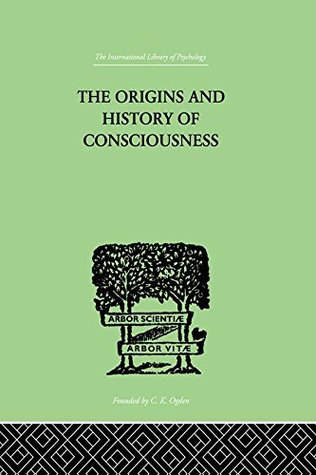More on this book
Community
Kindle Notes & Highlights
Started reading
March 21, 2019
Anything deep—abyss, valley, ground, also the sea and the bottom of the sea, fountains, lakes and pools, the earth (illus. 10), the underworld, the cave, the house, and the city—all are parts of this archetype. Anything big and embracing which contains, surrounds, enwraps, shelters, preserves, and nourishes anything small belongs to the primordial matriarchal realm.22 When Freud saw that everything hollow was feminine, he would have been right if only he had grasped it as a symbol. By interpreting it as the “female genitalia” he profoundly misunderstood it, because female genitalia are only a
...more
pleromatic
This initial stage when ego consciousness is still on the infantile level is marked by the predominance of the maternal side of the uroboros.
Just as the infantile ego, living this phase over again, feebly developed, easily tired, emerges like an island out of the ocean of the unconscious for occasional moments only, and then sinks back again, so early man experiences the world.
twilit
of the Great and Good Mother has at all times of
Sophia,
the image of a psychic stage of humanity, just discernible as borderline image.
desire to remain unconscious, is a fundamental human trait.
There is, as a counteracting force, the desire to become conscious, a veritable instinct impelling man in this direction.
The struggle between the specifically human and the universally natural constitutes the history of man’s conscious development.
hieros gamos
uroboric incest, the emphasis upon pleasure and love is in no sense active, it is more a desire to be dissolved and absorbed; passively one lets oneself be taken, sinks into the pleroma, melts away in the ocean of pleasure—
Liebestod.
unio mystica
Man’s consciousness rightly feels itself to be the child of these primordial depths; for not only in the history of mankind is consciousness a late product of the womb of the unconscious, but in every individual life, consciousness re-experiences its emergence from the unconscious in the growth of childhood, and every night in sleep, dying with the sun, it sinks back into the depths of the unconscious, to be reborn in the morning and to begin the day anew.
inchoate
En-Soph
ca...
This highlight has been truncated due to consecutive passage length restrictions.
It symbolizes the creative element, not personal genitality.
It is only personalistic misunderstanding that makes these sacral contents “obscene.”
The desecration of pagan values in the struggle for monotheism and for a conscious ethic was necessary, and historically an advance; but it resulted in a complete distortion of the primordial world of those times.
The word, speech, is a higher product, the utterance of one sunk in himself, in his own depths. When we talk of “introversion” we say the same thing. In India, tapas, “inward heat” and “brooding,” is the creative force with whose help everything is made.
Just as the maternal side of the uroboros gives birth without procreation, so the paternal side procreates without the maternal womb.
creation is something not altogether expressible in the symbols of sexuality, and they proceed to formulate the unformulable in an image.
wind-ruach-pneuma-animus,
midrash
primal ocean, likewise an origination symbol—for as a ring-snake the uroboros is also the ocean—is the source not only of creation but of wisdom too.
But existence after death and prenatal existence in the uroboros are the same thing.
all knowing is “memory.”
saddik,
Hasidism, the mystical Jewish movement dating from the end of the eighteenth century:
In the child the great images and archetypes of the collective unconscious are living reality, and very close to him; indeed, many of his sayings and reactions, questions and answers, dreams and images, express this knowledge which still derives from his prenatal existence.
ancestral knowledge,
Kundalini yoga
In both cases thinking is emotional, bound up with affects and passions.
Only if a thought is a passion that grips the heart can it reach ego consciousness and be perceived;
consciousness is only affected by the proximity of the idea to the archetype.
haruspicy
alimentary
One’s state of mind is the more dependent upon whether one is satisfied or not, or thirsty or not, the less one’s consciousness and one’s ego are developed.
alimentary canal
abeyance,


